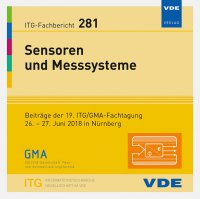Plasmonic sensor system for on-site monitoring of diclofenac molecules
Konferenz: Sensoren und Messsysteme - 19. ITG/GMA-Fachtagung
26.06.2018 - 27.06.2018 in Nürnberg, Deutschland
Tagungsband: Sensoren und Messsysteme
Seiten: 3Sprache: EnglischTyp: PDF
Persönliche VDE-Mitglieder erhalten auf diesen Artikel 10% Rabatt
Autoren:
Steinke, Nadja; Wuchrer, Roland; Doering, Sarah (Fraunhofer Institute for Ceramic Technologies and Systems IKTS, Maria-Reiche-Str. 2, 01109 Dresden, Germany)
Gerlach, Gerald; Haertling, Thomas (Fraunhofer Institute for Ceramic Technologies and Systems IKTS, Maria-Reiche-Str. 2, 01109 Dresden, Germany & Technische Universität Dresden, Institute of Solid State Electronics, Mommsenstr. 15, 01069 Dresden, Germany)
Inhalt:
In previous studies, we applied a commercial surface plasmon resonance (SPR) sensor successfully to detect molecules of diclofenac in solutions simulating contaminated water sources. For such laboratory investigations, SPR sensors are well suited and, hence, they are established in the field of environmental and life sciences. However, they lack robustness which limits their applicability for on-site measurements, e.g. directly at water treatment plants. We therefore extended our study and set up a robust low-cost biosensor system. We used nanoimprint lithography to fabricate nanostructured gold surfaces which act as SPR transducers. For readout of the SPR signal the system is equipped with a novel photocurrent read-out unit allowing to register changes in the SPR signal resulting from specific binding of anti-diclofenac anti-bodies to the diclofenac-functionalized gold surface. The observed shift in the optical transmittance spectra and changes in the photocurrents also proved that diclofenac molecules were successfully immobilized on the sensor substrate. The measurements also showed specific binding of anti-diclofenac antibody with subsequent regeneration.


